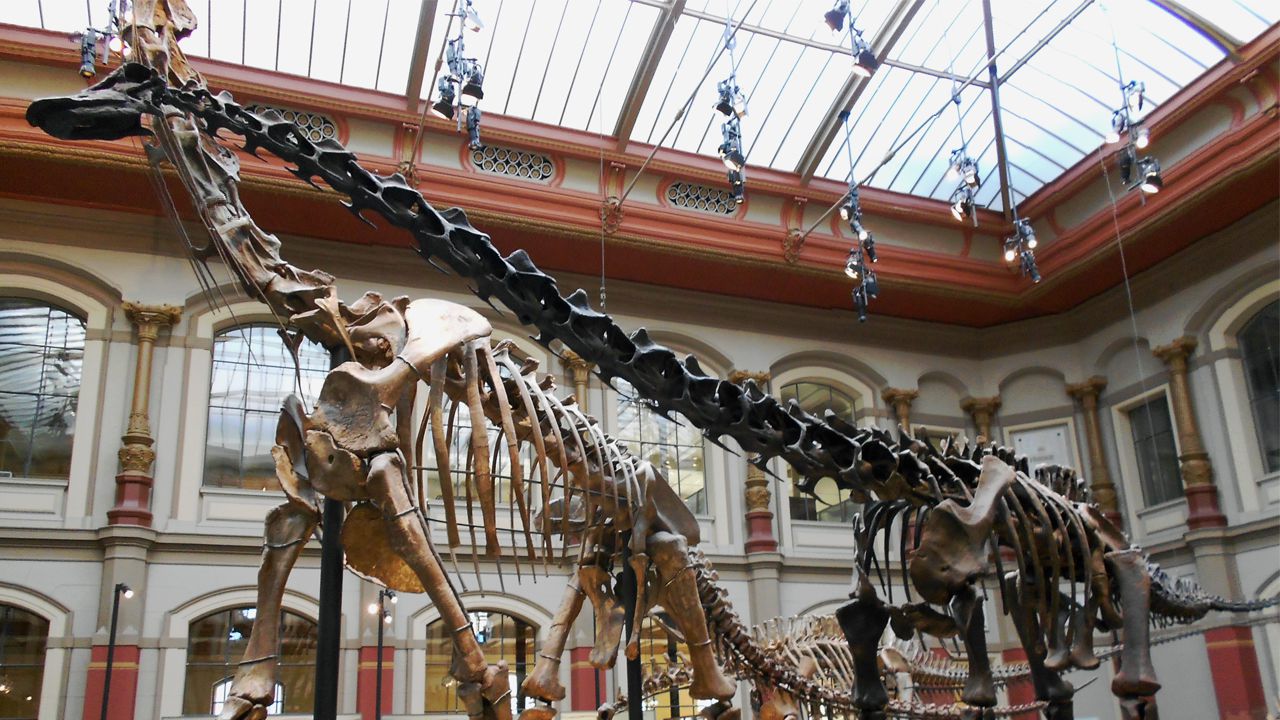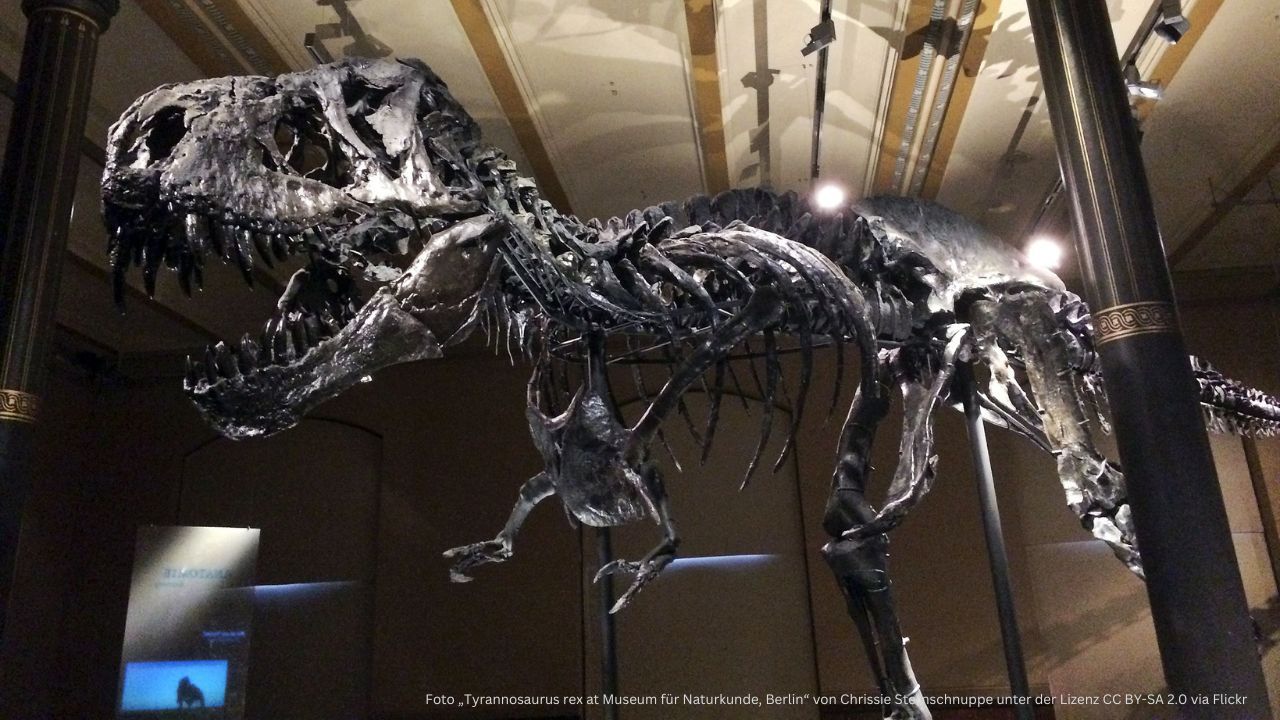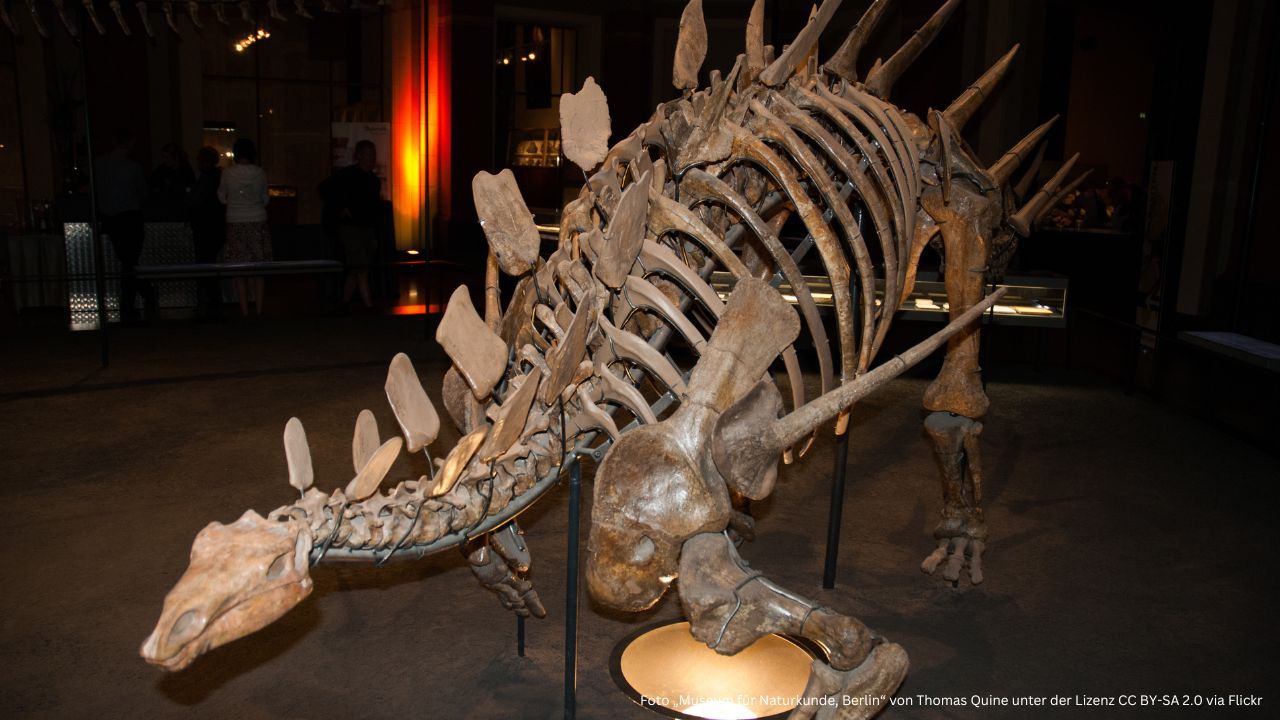Museum

Natural History Museum Berlin
The Natural History Museum in Berlin offers visitors an insight into the prehistoric world with a series of dinosaur skeletons and interactive multimedia displays.
On an exhibition area of 6,600 square metres, the Museum für Naturkunde impressively presents its valuable and rare objects under the motto "Evolution in Action". There are many splendidly reconstructed skeletons. As soon as you enter the museum you will stop devoutly. Your time travel begins. In front of you is the world's largest dinosaur skeleton, a Giraffatitan Brancai over 13 metres high. It is the most important fossil of the Natural History Museum and is permanently exhibited. On a foray through evolution, for example, you will learn about the cosmos, the earth, the life and death of dinosaurs, the formation and migration of continents, volcanoes and meteorite impacts.
Since December 2015, the Museum of Natural History has housed the extraordinary exhibition of the "Tristan Otto", the best-preserved skeleton collection of the 12 m tall Tyrannosaurus Rex. A research team will give you specific information about the location and personal history of this unique original skeleton. This 70-million-year-old skeleton was found in Montana, USA in 2012 and now the Berlin Museum of Natural History has the honour to exhibit the find for the first time in Europe. Besides the T. Rex, other dinosaur skeletons are exhibited and explained. Don't miss this exciting expedition on the traces of our earth history!
Natural History Museum Berlin
Location & Sights nearby
The Museum für Naturkunde is located in the heart of Berlin. It is located in the district of Berlin-Mitte and is surrounded by many sights. The Berlin Wall Memorial is located just around the corner of the museum. A few steps further on you will find the famous shopping mile Friedrichstraße. The Oranienburger Straße promenade, which is frequently visited by tourists, is also not far away and offers numerous sights, bars, restaurants and cafés.
Brief history of the Natural History Museum
By 1886 the university was already overcrowded with collections, so construction began on a new building at 43 Invalidenstrasse, which was opened in 1889 as the Museum of Natural History. The museum was built on the site of a former ironworks, which is reflected in two spectacular cast-iron stairwells inside the building. The collections were damaged by the Allied bombing of Berlin during the Second World War. The east wing was severely damaged and only rebuilt in 2011, which now houses the alcohol collections (some of which are open to the public). In 1993, after the restructuring caused by the reunification of Germany, the museum was divided into three sections: The Institutes of Mineralogy, Zoology and Palaeontology.
Address, opening hours...
Address: Invalidenstr. 43, 10115 Berlin
Opening Hours: Monday: closed, Tuesday to Sunday: 9:30 AM to 6:00 PM
Admission: €11, reduced: €5, families (two adults with up to three children under 14 years): €18.00
Connections: U-Bahn station Naturkundemuseum, buses M5, N6
Weather
At a glance
Impressions
All offers at a glance.
With the best tips for Berlin at Welcome to Berlin



